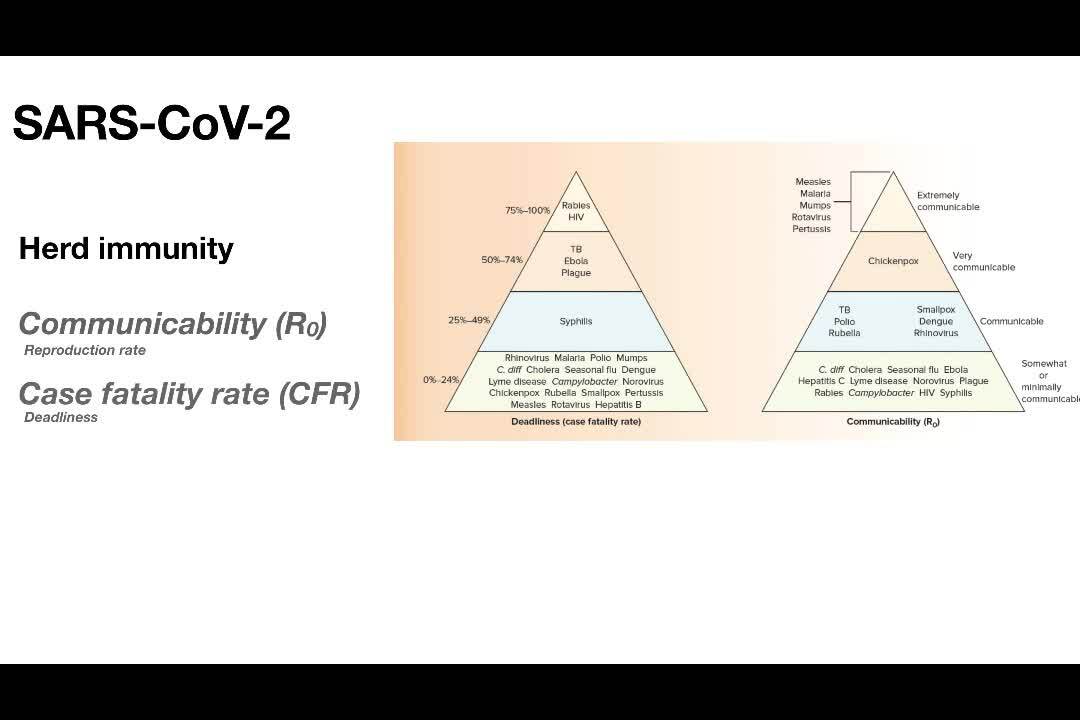Epidemiology of a Pandemic - Lecture in a Box
In this Lecture in a Box, learn more about the Epidemiology of a Pandemic
Published August 19, 2020

Instructors - with everything else you are handling during this bizarre semester, brushing up on your epidemiology may not be high on your list. But students have been bombarded with a lot of information (good and bad) about how pandemics work, and they will probably be looking to you for answers. I have taught epidemiology to undergraduates for over 20 years, and I put together a little 30-minute lecture that you can pop in to your course, pain-free! In this lecture, with clear slides and narration by me, your students will get information on what epidemiology actually is, how SARS-CoV-2 how screening tests work (including specificity vs. sensitivity), why some people get sick and others don't, herd immunity, contact tracing, vaccine preparation, and more.
Also: here are some multiple-choice questions you can use for polling, or quizzing. (Best single answer.)
- If a screening test has a high rate of false positives, it is
- not very specific
- not very sensitive
- still better than a diagnostic test
- Herd immunity will be effective when _____% of the population is immune or protected in some way.
- 100%
- 50%
- it varies depending on the microorganism
- it varies depending on what country the epidemic is in
- Which of the following circumstances can contribute to herd immunity in the case of COVID-19?
- vaccination
- having the disease and recovering
- using social distancing/masking
- all of the above
- all but one of the above
- A zoonosis is
- an infection which humans can acquire from an animal
- an infection with a microbe that mutates in order to be able to jump from animals to humans
- an infection of large animals
- more than one of the above.




